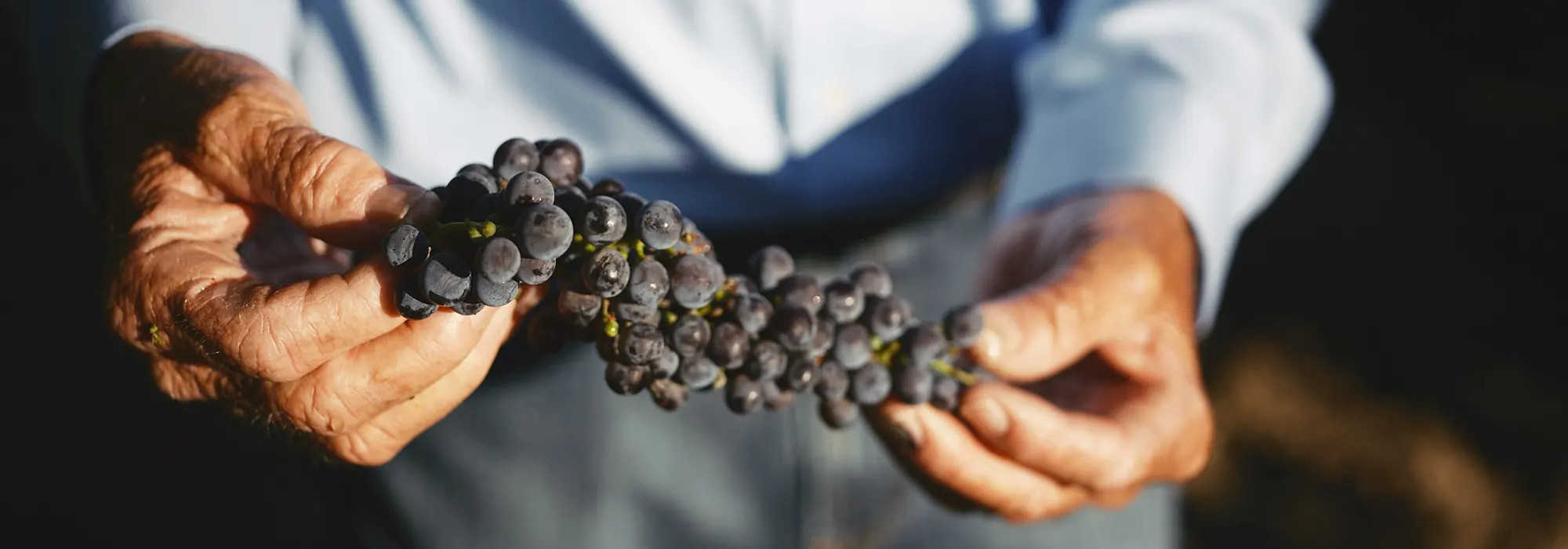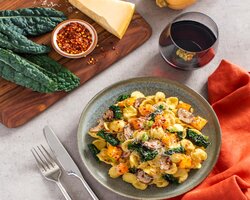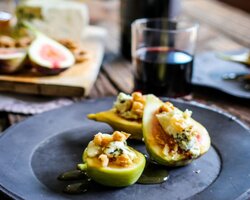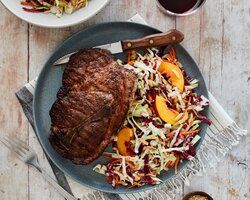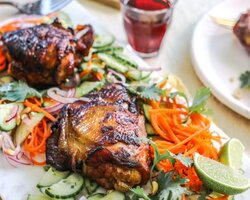Wine Country Recipe ~ Popcorn Trio
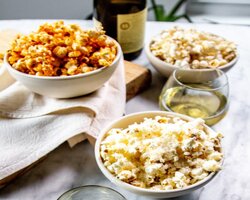
When it’s movie night – or the big game on TV night, make sure the snacks belong on the highlight reel. With this trio of wine-friendly flavored popcorns, the treats may steal the show. Make one, two or all three if you’re feeling ambitious. Pair with your favorite Temecula Valley Chardonnay or Cabernet Sauvignon.
Ingredients:
Pimentón Popcorn
- Stovetop Popcorn from ¼ cup popcorn kernels
- 1-1/2 tablespoons unsalted butter, melted
- 1 teaspoon pimentón (Spanish smoked paprika), hot or mild, or paprika
- ½ teaspoon sea salt
Put the hot popcorn in a serving bowl. Add the butter, pimentón and salt and toss well.
Porcini Butter Popcorn
- Stovetop Popcorn from ¼ cup (55 g) popcorn kernels
- 1-1/2 tablespoons unsalted butter, melted
- 1-1/2 teaspoons porcini powder or mushroom powder (see Note)
- ½ teaspoon sea salt
Put the hot popcorn in a serving bowl. Add the butter, porcini powder and salt and toss well. NOTE: You can find porcini powder at spice shops and well-stocked supermarkets, or you can make your own by grinding dried porcini to a powder in a spice mill.
Brown Butter and Parmesan Popcorn
- 4 tablespoons (60 g) unsalted butter
- Stovetop Popcorn from ½ cup (110 g) popcorn kernels
- 1/2 cup (30 g) finely grated Parmigiano Reggiano cheese
- ¾ teaspoon sea salt
Melt the butter in a small saucepan over medium-low heat. Continue cooking, swirling the pan often, until the butter stops foaming and hissing, a sign that most of the moisture has evaporated. At that point, the melted butter will begin to turn golden-brown and smell nutty. Remove from the heat. Put the hot popcorn in a serving bowl and pour the warm brown butter over the popcorn, leaving any dark solids at the bottom of the pan. Add the cheese and salt and toss well.
Directions:
General stovetop popcorn preparation: Put 1 tablespoon vegetable oil and 3 to 4 popcorn kernels in a heavy saucepan. Cover, leaving the lid slightly ajar, and place over medium heat. When the kernels pop, add ¼ cup (55 g) popcorn kernels and recover, leaving the lid slightly ajar so steam can escape. Cook over medium heat, shaking the saucepan occasionally, until you no longer hear kernels popping. Makes about 7-1/2 cups (1.75 liters).
Suggested Pairings:
Altisima Winery ~ 2019 Chardonnay – Aged in half stainless steel and half new French oak barrels, this full-bodied Chardonnay is the perfect white wine for the red wine drinker, boasting strong oak aromatics, a creamy texture, and a butter finish.
Baily Winery ~ 2018 Cabernet Sauvignon – Offers warm, rich tones with subtle, herbaceous qualities and a hint of mint.
Oak Mountain Winery ~ 2021 Chardonnay – This chardonnay is more creamy, buttery, and oaked with French oak imparting rich flavors of vanilla, butterscotch, crème brulee and caramel.
Thornton Winery ~ Limited Reserve Cabernet Sauvignon -Very classic berry and pepper aromas came forth while subtle herbaceous notes meld with the warm toasty aromas from the oak.
Recipe and photo courtesy of The Wine Institute of California

